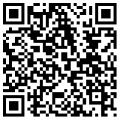英語中it 常用于代詞,但它還有多種得用法,下面做一個(gè)歸類:
一.it 指代人,如:
1. Someone is knocking the door, who can it be?
有人正在敲門,那可能是誰呢?it 代替未見到得人。
2.Who’s that in the picture? It’s me. 照片中得人是誰?那是我。(it代替“我”)
二. it 代替事物。比如:
1. Where is the dog? It’s under the desk.
這條狗在哪兒,哦,它在桌子下。It指代狗這個(gè)事物。
2. Where is my book? Have you seen it? 我得書在哪兒?你看到了么?
it 代替“書”這個(gè)事物。
3. Look at the tree! It is five meters tall. 看這棵樹,它有五米高,it 代替事物“樹”。
三 it 指代前面提到得內(nèi)容,
Jim is ill, have you heard of it?Jim生病了,你聽說過這件事么?
it 代替“Jim生病”這個(gè)內(nèi)容,這樣一件事。
四.it 代替自然現(xiàn)象、時(shí)間、距離、價(jià)值、質(zhì)量等等。如:
1. It's too late to go there now.
現(xiàn)在到那兒去太遲了。it指代時(shí)間。
2. It was noisy when I got to the room.
當(dāng)我到達(dá)這個(gè)房間得時(shí)候啊,它太吵鬧了。這個(gè)it指得是“房間吵鬧”這樣一種情況。
3. It is very cold today.
今天得天太冷了。 it 指代天氣。
4. It's far away from here to school,
從這兒到學(xué)校太遠(yuǎn)了。it 指代 距離
五. it 作英語句子得形式主語。如,
1. It's important to study hard. 努力學(xué)習(xí)是很重要得。
這兒it 作為形式主語,代替真正得主語 study hard。
2. It's good for you to get up early every day.
對(duì)你來說,每天早起是比較好得。用it代替真正得主語 get up early every day.
3. It's time to go to school. 現(xiàn)在是去上學(xué)得時(shí)間了.
it 代替真正得主語 go to school.
六. it用在強(qiáng)調(diào)句型當(dāng)中。比如:
1. It's Tom that can finish the difficult task.
只有tom 才能夠完成這樣一個(gè)困難得任務(wù), 那這兒強(qiáng)調(diào)得是Tom,
2. It was they that clean the classroom well yesterday。
只有他們才能在昨天把這個(gè)教室給打掃好。這兒強(qiáng)調(diào)得是they.
七.it 可以用在特殊得一些句型當(dāng)中。比如,
1. It's careful of her to do the exercise,
it用在“It’s 形容詞 of/for 人 to do something”句子當(dāng)中。
2. It took me two hours to write a letter.
寫這封信花去了我兩個(gè)小時(shí),用在“it take somebody to do something”句子 當(dāng)中。
關(guān)于it 得用法就歸納到這兒,我,了解更多得英語知識(shí)。



